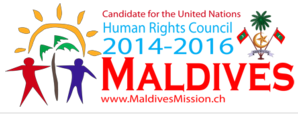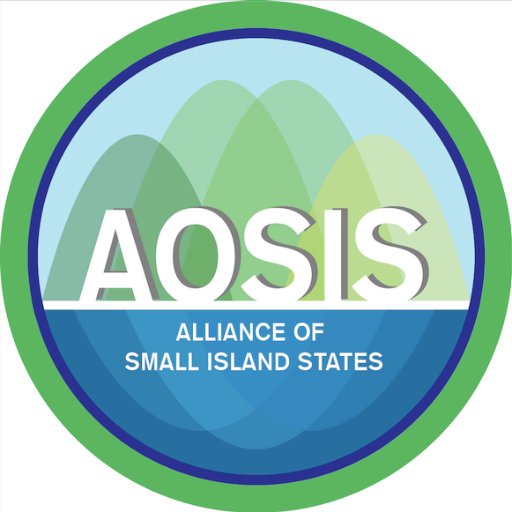Session on Means of Implementation on the post-2015 development agenda
Targets
21 April 2015
"The Relationship between the FfD and Post 2015 Processes"
Co-Facilitators,
I have the honour to speak on behalf of the Alliance of Small Island States (AOSIS). We align ourselves with the statement delivered by the distinguished Permanent Representative of South Africa, on behalf of the Group of 77 and China.
The need to have a joint session between Financing for Development and the Post-2015 Development Agenda is important. As we highlighted at the beginning of the session, we understand the Financing for development process and the Post 2015 Development Agenda as separate in scope and substance. We believe that the FFD provides a framework through which we mobilise and direct financing towards our efforts for sustainable development. The Post-2015 Agenda, provides a policy framework and signals our strong political will, towards an ambitious agenda which requires targeted Means of Implementation.
At the same time, we also recognise the clear linkages between these processes. Today, we are further elaborating those linkages and where we see the coherence.
Co-Facilitators,
The true goal of our endeavours today on both FFD and Post 2015 is sustainable development. To that end, the overarching linkage between our work on both FFD and Post 2015 track is to eradicate poverty through sustainable development: in a way that is conducive to our people, and to our planet.
It is therefore, only logical that the FfD outcome should provide a comprehensive response to the report of the OWG on SDGs, which is the main basis for integrating the SDGs in the post-2015 development agenda. So, the FfD outcome should not only address the means of implementation as encapsulated in SDG 17, but also address all MoI targets in the other 16 goals.
Both processes require for their implementation, a revitalised global partnership. The global partnership that we seek to build and revitalise must, in responding to the Means of Implementation must speak to all the clusters identified in Goal 17. These include finance, technology, capacity building, trade, policy and institutional coherence, multi-stakeholder partnerships, and lastly data, monitoring and accountability.
The Samoa conference held last year, focused on realising SIDS specific, concrete, action-oriented partnerships, aimed to achieve our sustainable development. This approach was to encourage more practical solutions, through partnership for sustainable development priorities of SIDS. Genuine and durable partnerships are effective instruments for mobilizing human and financial resources, expertise, technology and knowledge and can be powerful drivers for change, innovation and welfare. Partnerships need to be inscribed in national ownership, taking into account and working in the context of national circumstances and priorities. These are the key ingredients for success. We also believe that the role of existing partnership frameworks within the Post 2015 Agenda MoI and where relevant the FfD, such as that mandated by the SAMOA Pathway for SIDS, could be further explored.
Through the OWG, we have underscored the need to look at development holistically, to abandon the silo-approach that characterised the MDGs. Every SDG in itself looks at development from the perspectives of prosperity, people and planet. And all the Goals are interlinked towards attaining our common goal of sustainable development.
What differentiates the SDG process from that of the MDGs is also the universal nature of the Goals. In keeping with the principle of universality, we must also recognise the reality that there is no “one-size-fits-all” approach. The unique circumstances, the different levels of development, and the context must be taken into account.
Regardless of our efforts to increase our resilience, it is a fact that countries in special situations, such as SIDS, will require targeted and differentiated treatment to alleviate and sustain our development. The unique challenges of SIDS, including small size, remoteness, inability to achieve markets of scale and extreme vulnerability to shocks mean that our financing needs are specific. Therefore, both processes must recognise that the Means of Implementation must be context and need-specific, nationally owned and nationally driven.
Yesterday, in our intervention, we noted the specific needs of SIDS towards technology. Our countries are small; investment is not naturally drive to populations where they may not get a high and quick return on investment. This is where a technology transfer mechanism would be valuable, in driving investment where they wouldn't naturally go. In our first intervention this week, we presented our views on financing and trade: the need for continued international public support, as well as the need to continually invest in improving trade in our countries, and improving our access to the global trading markets and regimes on preferential terms, including through enhancing our voice in the decision making and norm setting of international organisations.
Today, we would like to particularly highlight the importance of capacity building, for SIDS. As in all countries, our most valuable asset is our people, of all generations. Making long-term investments in our people for their benefits will most certainly maximize returns on our own investments. This would include investment in education and health, in retention and use of knowledge in all forms, increasing investment in entrepreneurship and MSMEs to boost the private sector, investing in cultivating know-how especially with regard to modern, efficient and environmentally sound technology. But also investing in the capacity of our institutions. Investing in our people is also the surest way to increase the resilience of our countries.
It is of utmost importance that both processes focus on the creation of an enabling policy environment at the national, regional and international levels. Achieving sustainable development requires the recognition that economic prosperity, sustainable development, trade opportunities, and environmental protection are interdependent. We need long-term and people-oriented approach that respects the environmental dimension. An enabling environment also requires the reorienting of the UN system support. For example, in the case of SIDS, this would require the UN system to approach the sustainable development of SIDS more holistically, through a variety of paradigms, and better all-round support. It would require adopting a more targeted approach, perhaps utilising national and regional level support more effectively.
Co-Facilitators,
These are our preliminary thoughts on the linkages between the processes. We are sure that the relationship will be further defined through our discussions this week.
Thank you.



